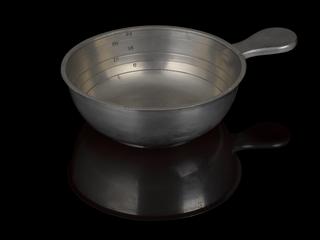

Six lancets in a tortoiseshell case, various makers, English, 1700-1900
These six double-edged lancets were used in bloodletting – a practice once commonly carried out to treat a wide range of diseases and medical conditions. Each lancet has a protective tortoiseshell guard and once unfolded the blade lengths range from 35 mm to 50 mm. The lancets were made by a number of makers, including Evans, Savigny and Carsberg, all surgical instrument makers working in the 1700s and 1800s in England.
The depth of the cut for bloodletting depended on the skill and experience of the user. The case is made of tortoiseshell and is marked with the letters “W H”. These are the initials of W Hutchins, whose name is also scratched on two of the tortoiseshell guards.
Details
- Category:
- Therapeutics
- Collection:
- Sir Henry Wellcome's Museum Collection
- Object Number:
- A617199
- Materials:
- wood, tortoiseshell, silver, steel and card
- Measurements:
-
overall: 12 mm x 70 mm x 45 mm, .05kg
overall (case closed): 14 mm x 41 mm x 66 mm, 0.04 kg
overall (case open): 14 mm x 71 mm x 91 mm, 0.04 kg
- type:
- lancet
- credit:
- Loan, Wellcome Trust




